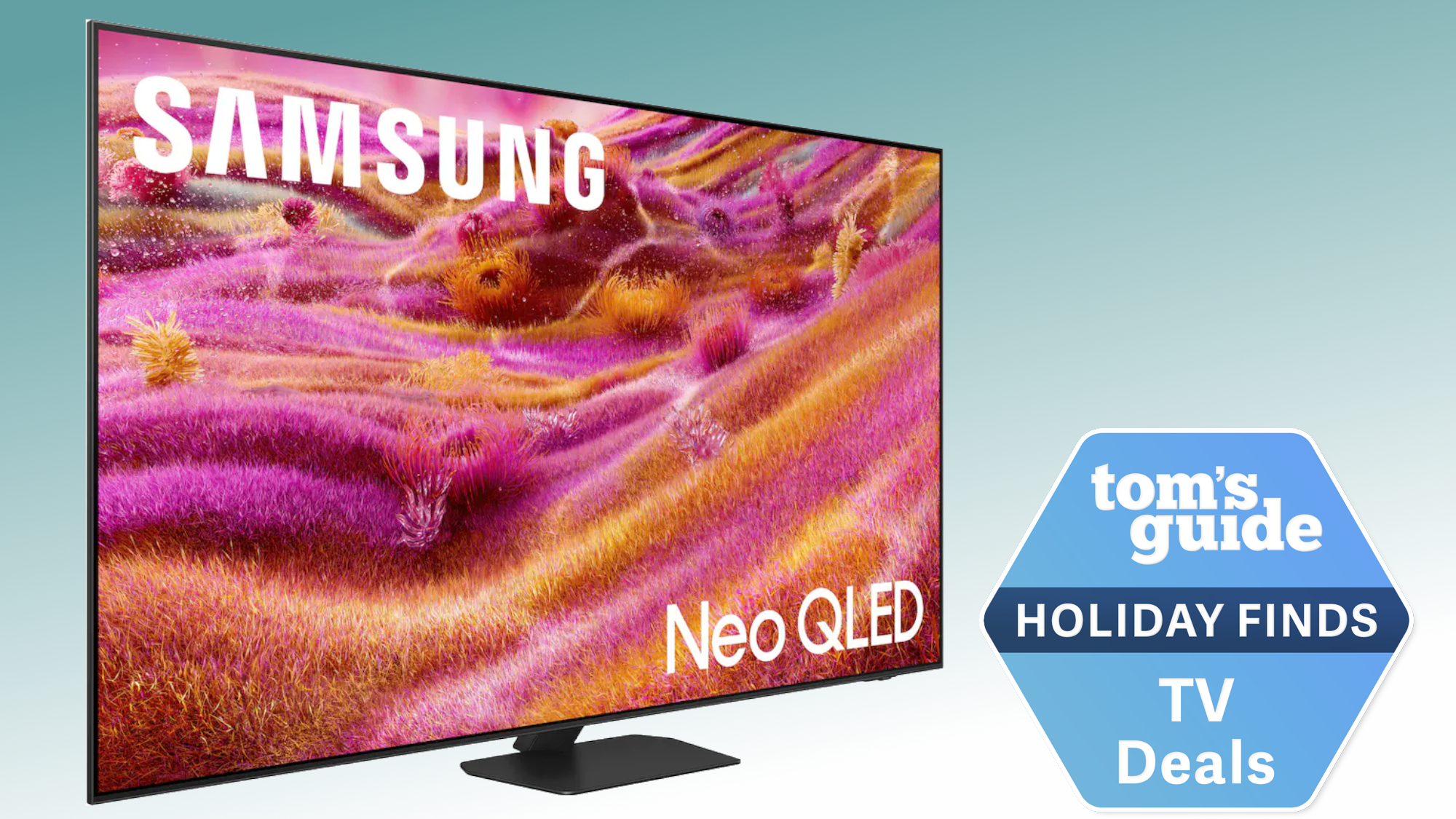OnePlus Pad vs iPad (10th gen): Which tablet wins?
Which tablet should you get?
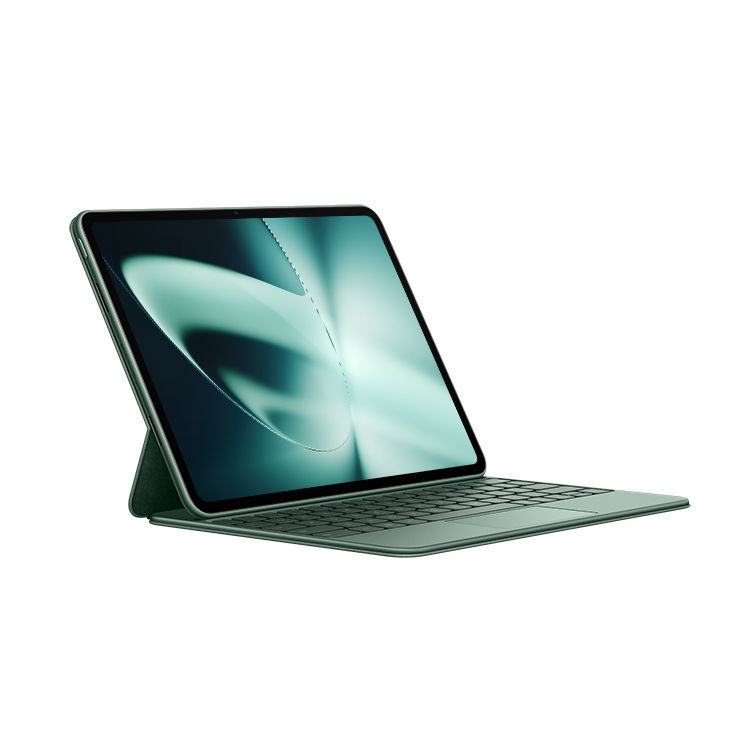
The OnePlus Pad has a lot going for it. Its Dimensity 9000 CPU provides solid performance, and you get over 13 hours of battery life. Curved edges make it comfortable to hold for hours and its centered 13MP rear camera makes snapping photos easy.
Pros
- Incredible battery life
- Comfortable curved edges
- Sharp front and rear cameras
- Fast performance
Cons
- Mediocre speaker quality
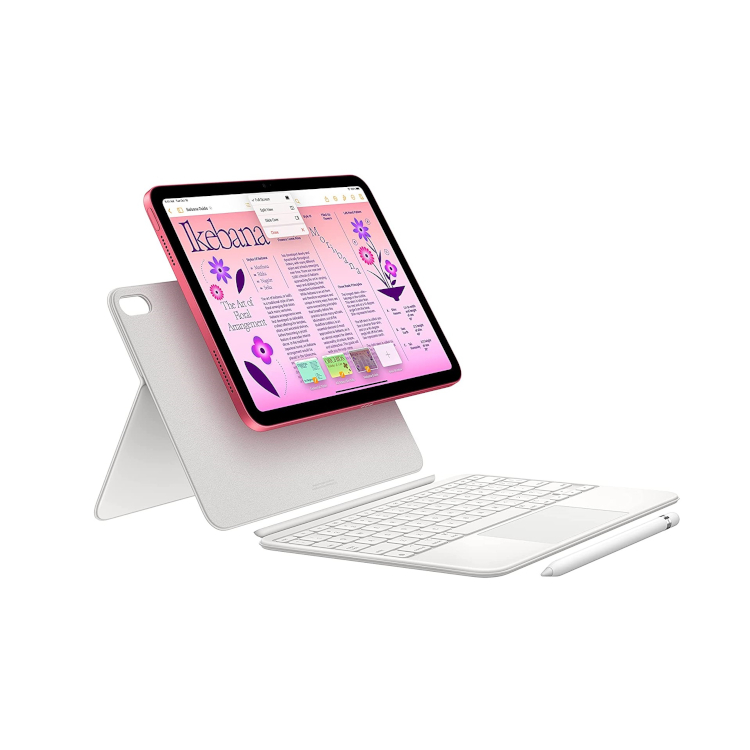
The new iPad 2022 (10th gen) delivers almost everything you could want in a modern tablet, offering a larger display than last year’s iPad along with a sleeker design, faster A14 Bionic chip and USB-C charging. But this tablet costs $120 more than its predecessor, and it only supports the hard-to-charge 1st gen Apple Pencil.
Pros
- Sleek design
- Fast A14 Bionic processor
- Long battery life
- Comfy Magic Keyboard with touchpad
Cons
- Pricier than previous model
- Apple Pencil awkward to charge
- Just 64GB of storage
The OnePlus Pad is one of the best Android tablets and overall best tablets we’ve tested. Not only does it have a unique design that sets it apart from its competitors, but it also packs plenty of power — all for $479. There’s a reason we rated the tablet so highly in our OnePlus Pad review. The company’s first tablet is a winner.
This begs the question: how does the OnePlus Pad compare to the Apple iPad 10th gen? Both tablets share similarities but there are also meaningful differences. Below, we compare both tablets based on our reviews to see which slate is the right one for you.
OnePlus Pad vs iPad (10th gen): Specs
| OnePlus Pad | iPad (10th gen) | |
|---|---|---|
| Price | $479 | $449 |
| Display | 11.6 inches (2800 x 2000) 7:5 aspect ratio, 144Hz | 10.9-inch (2360 x 1640) Liquid Retina |
| OS | Android 13 | iPadOS 16 |
| CPU | MediaTek Dimensity 9000 | A14 Bionic |
| RAM | 8GB LPDDR5 | 4GB LPDDR4X |
| Storage | 128GB | 64GB, 256GB |
| Ports | USB-C | USB-C |
| Cameras | 13MP (rear), 8MP (front) | 12MP front & rear |
| Battery life | 13.5 hours (tested) | 10:57 (tested) |
| Size | 10.1 x 7.4 x 0.2 inches | 9.79 x 7.07 x 0.28 |
| Weight | 1.2 pounds | 1.05 pounds (1.06 for cellular) |
OnePlus Pad vs iPad (10th gen): Price
The OnePlus Pad starts shipping on May 8 for $479. It features an 11.6-inch (2800 x 2000) 144Hz display, a MediaTek Dimensity 9000 CPU, 8GB of RAM and 128GB of storage.
The iPad 10th gen starts at $449. If you'd like 5G cellular connectivity, it starts from $599. You still get a rather stingy 64GB of storage for that money. There's the option to upgrade to 256GB, but that'll cost an extra $150 on either model.
The entry-level iPad (10th gen) is $30 cheaper than the OnePlus Pad, but is smaller and offers half the storage. Perhaps 64GB is enough for you, but if it isn’t, you’ll need to spend an extra $150 to get the iPad up to 256GB, because Apple doesn't offer a 128GB middle ground.
This effectively means that while the base iPad is cheaper than the base OnePlus Pad, it's not by much (~$30) and it means you get half the storage in a smaller tablet with a lower-resolution screen. And since neither the iPad nor the OnePlus Pad offer expandable storage, whatever storage you pay for up front is what you're stuck with for the life of the device.
OnePlus Pad vs iPad (10th gen): Design
At a glance, the OnePlus Pad could be mistaken for an iPad. On closer inspection, its distinctive features become more apparent. Unlike the flat-sided iPads and Galaxy Tabs, the OnePlus Pad has curved edges along its sides and bottom. This makes the tablet feel more ergonomic and comfortable to hold since it doesn’t have sharp edges digging into your palm. There’s a cutout with a flat edge on the top side (if holding the tablet in landscape mode) that’s perfectly sized to magnetically attach and charge the OnePlus stylus.
Get instant access to breaking news, the hottest reviews, great deals and helpful tips.
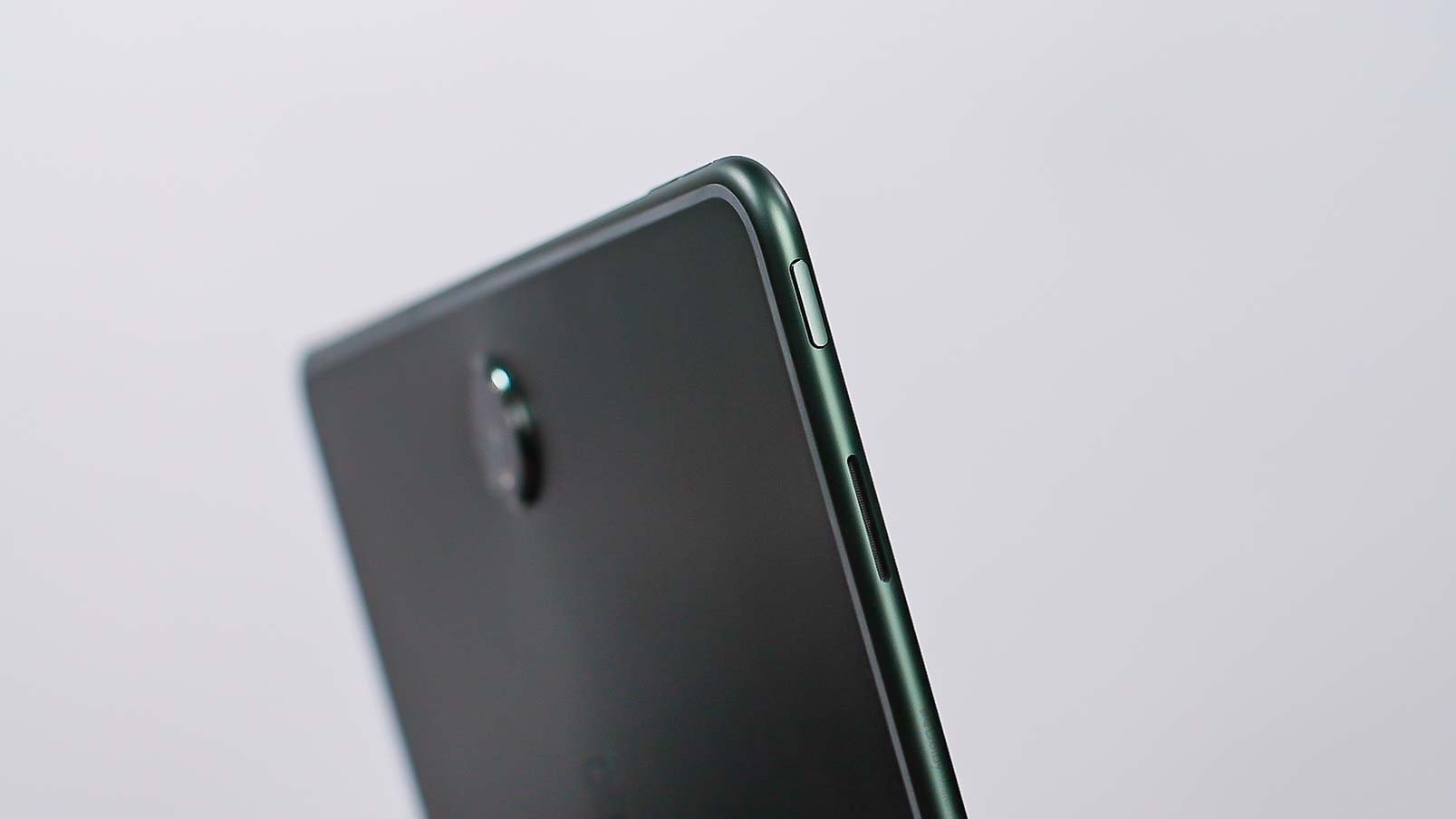
The enormous 13MP rear camera is one of this tablet’s signature design features. The camera is centered along the top edge of the tablet’s rear and is housed within an eye-catching black circle that sticks out both literally and figuratively. Because of that, it’s impossible for the tablet to lay flat on a surface. This isn’t an issue if you use the magnetic keyboard cover, however.
Measuring 10.1 x 7.4 x 0.2 inches and weighing 1.2 pounds without the cover, this elegant slab of machined aluminum is both thin and light. Even with the OnePlus Keyboard Cover adding additional weight and girth, the tablet feels extremely portable and easy to take with you wherever you go. The tablet only comes in Halo Green. Other color options would have been nice, but this shade of green is fetching.
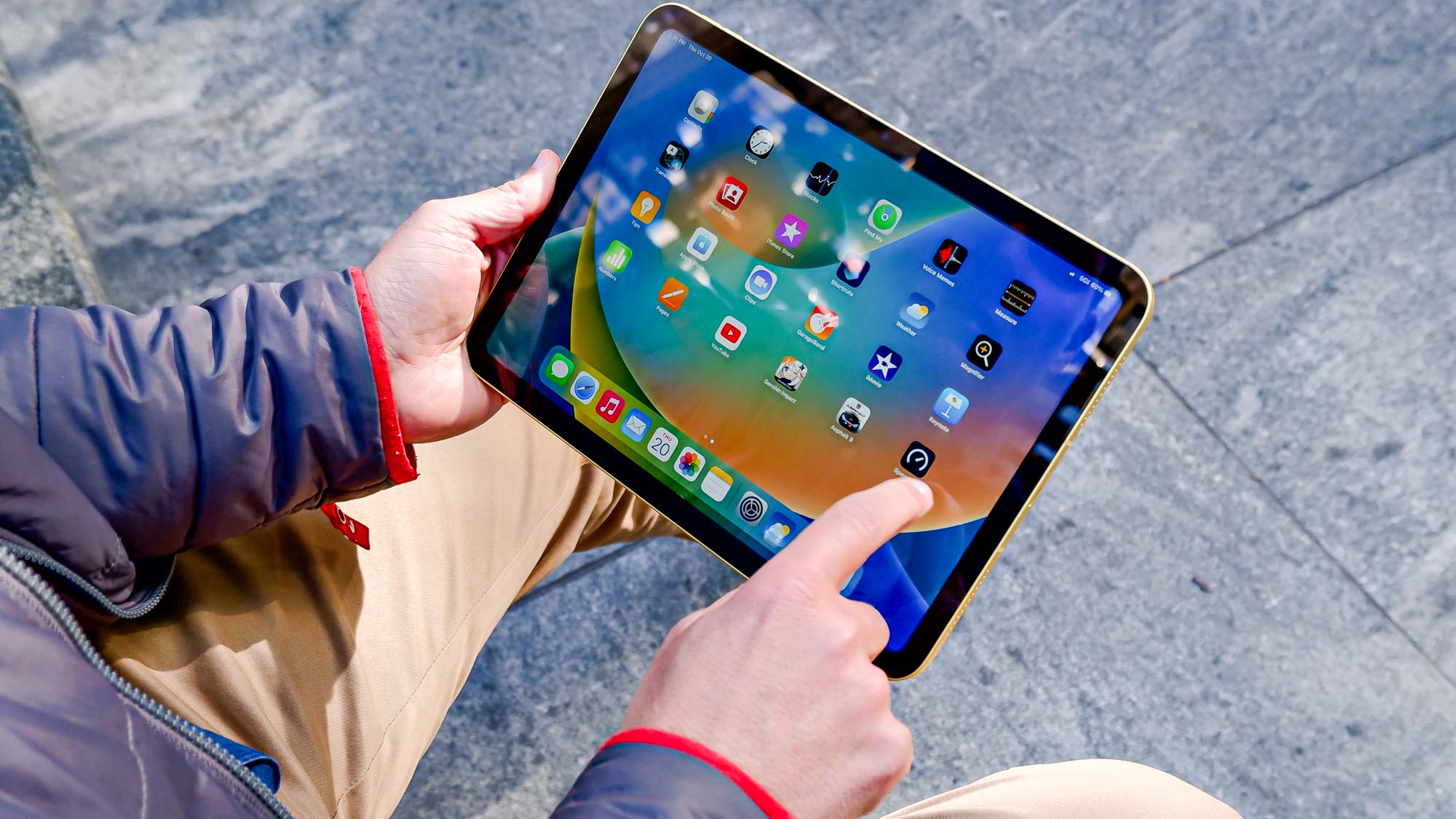
Measuring 9.79 x 7.07 x 0.28 inches and weighing 1.05 pounds (1.06 pounds for cellular), by comparison, the iPad (10th gen) is smaller and lighter than the OnePlus Pad. Apple has expanded the iPad’s display from 10.2 inches to 10.9 inches and ditched the old Home button. The result is a screen that goes nearly edge to edge, though the bezels are still very much noticeable. Another plus is that the iPad’s Power button has Touch ID built in, so you just need to rest your finger on the button to unlock the iPad.
Apple spiced things up with the iPad's colors. We reviewed the yellow model, which is quite bold and is a cross between yellow and gold. You can also pick pink, blue and silver.
Both tablets are roughly the same size and weight, though the OnePlus Pad is a tad heavier than the iPad. In terms of overall design, the OnePlus Pad is my preferred tablet since the curved edges are comfortable to hold, and when paired with the centered camera help the OnePlus Pad stand out from other slates.
OnePlus Pad vs iPad (10th gen): Display
The OnePlus Pad’s 11.6-inch display has a unique 7:5 aspect ratio. OnePlus says this aspect ratio will let you see more lines of an e-book and that more rows of a spreadsheet can be listed. In practice, we found that the 7:5 aspect ratio doesn’t make a meaningful difference when reading books or when looking at a spreadsheet.
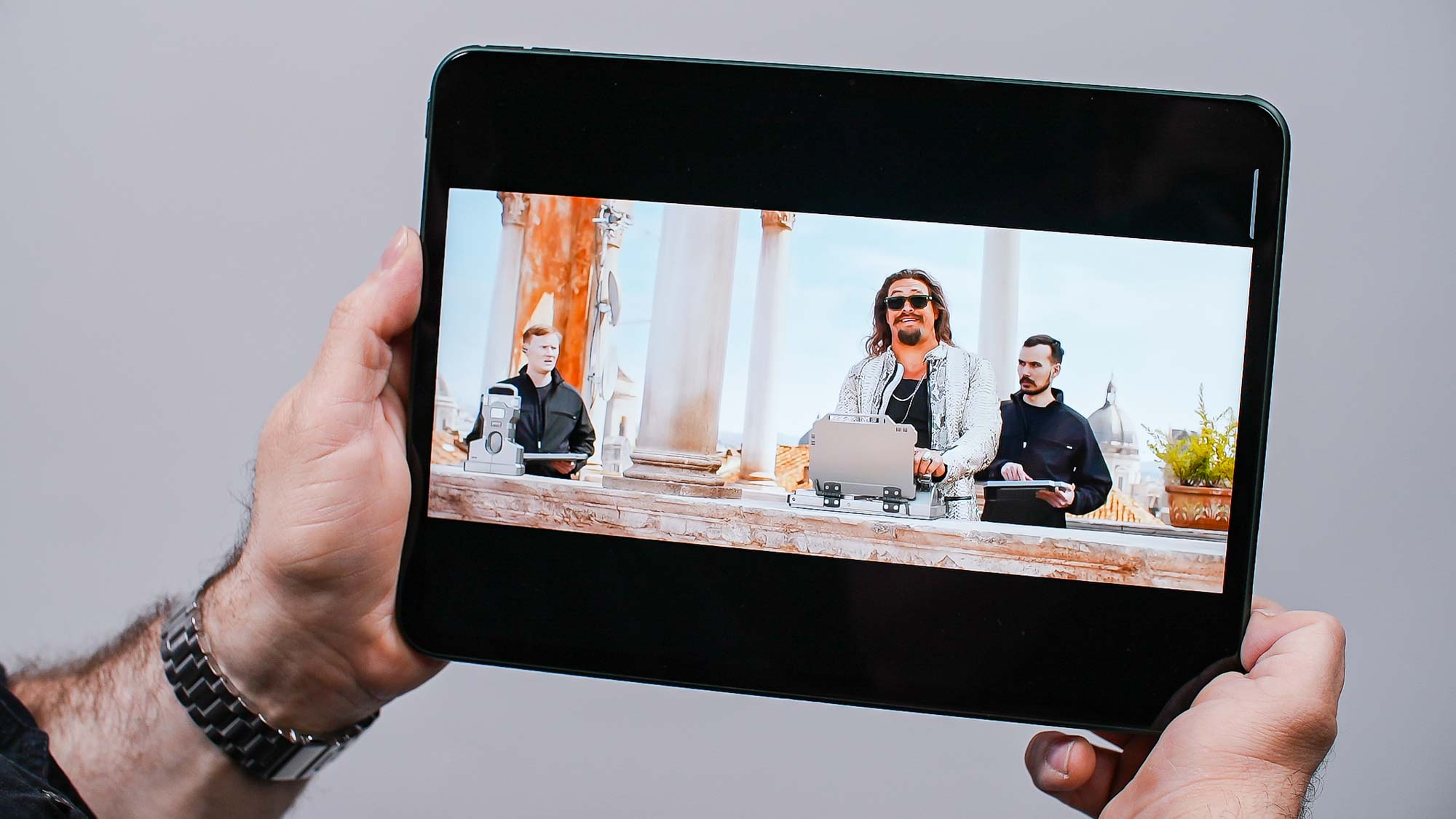
When we got the OnePlus Pad into our testing lab and pointed our instruments at it, we discovered the tablet’s panel achieves an average brightness of 465 nits, which is close to the advertised 500 nits. That’s just shy of the iPad 10th gen (504 nits).
| Header Cell - Column 0 | OnePlus Pad | iPad (10th gen) |
|---|---|---|
| Nits (brightness) | 465 | 504 |
| sRGB | 111.7% | 101.2% |
| DCI-P3 | 79.1% | 71.7% |
| Delta-E | 0.25 | 0.21 |
Like the Galaxy Tab S8, the OnePlus Pad has two color modes: Standard and Vivid. The former provides more natural tones, while the latter appears more vibrant. In Standard, the OnePlus Pad’s display covered 111.7% of the sRGB color gamut and 79.1% of the more demanding DCI-P3 color space (100% is most accurate). In Vivid mode, it achieved 159.5 % and 113%, respectively.
This reveals that, at least in terms of color accuracy, the OnePlus holds its own against the iPad, which achieved 101.2% and 71.7%, respectively.
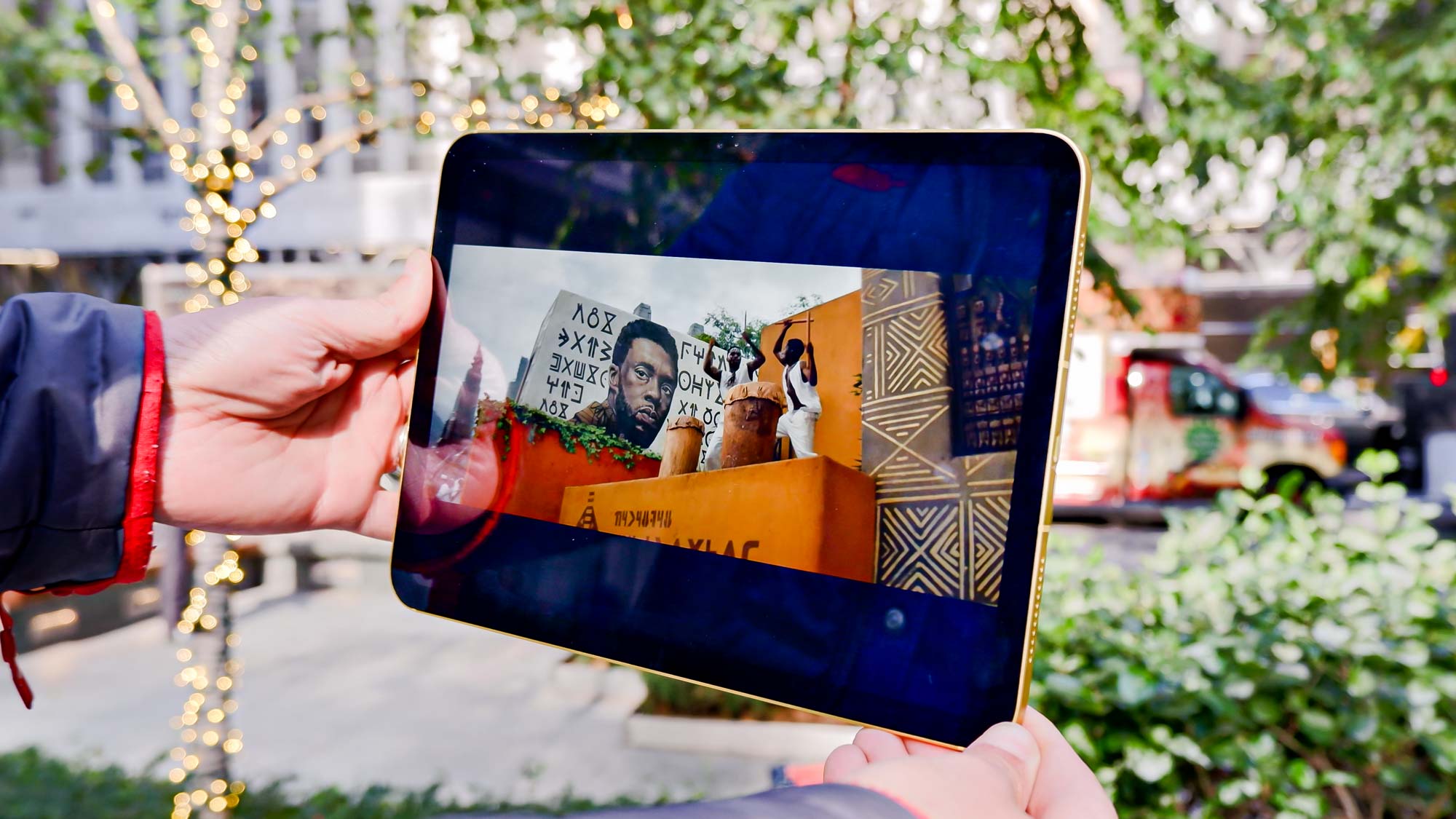
When we measured the Delta-E value of the screen, where lower numbers point to more color-accurate displays, the OnePlus Pad scored 0.25 and 0.29, respectively, in Standard and Vivid modes. The iPad (0.21) performed slightly better in this test. Still, it's not the sort of difference most people notice.
The OnePlus Pad and iPad are fairly even based on our lab tests, though OnePlus’ tablet arguably has an advantage with its Vivid mode.
OnePlus Pad vs iPad (10th gen): Performance
The OnePlus Pad has excellent performance that’s comparable to the Galaxy Tab S8. However, the iPad (10th gen) has better performance overall.
| Header Cell - Column 0 | Single-core | Multi-core |
|---|---|---|
| OnePlus Pad | 853 | 3,275 |
| iPad 10th gen | 1,580 | 4,400 |
In the Geekbench 5 CPU benchmark test, which measures overall performance, the OnePlus Pad scored 853 on single-core and 3,275 on multi-core. In comparison, the A14 Bionic chip-powered iPad scored a much higher 1,580 / 4,400.
| Header Cell - Column 0 | Wild Life Original Unlimited |
|---|---|
| OnePlus Pad | 8,793 / 52 fps |
| Samsung Galaxy Tab S8 | 9,549 / 57 fps |
| iPad 10th gen | 5,509 / 46 fps |
Graphics-wise, the OnePlus Pad scored 8,793 and hit 52 frames per second on the 3DMark Wild Life Original Unlimited test, which is designed to evaluate how well a device handles the graphically-intensive bursts of performance required by high-end mobile games. That’s better than the iPad, which scored 5,509 and hit 46 fps on the same test.
| Header Cell - Column 0 | Time (seconds) |
|---|---|
| OnePlus Pad | 0:55 |
| Samsung Galaxy Tab S8 | 0:48 |
| iPad 10th gen | 0:29 |
In our video transcoding test in Adobe Premiere Rush, the OnePlus Pad finished the task in 55 seconds while the iPad (0:29) was much faster in this test.
OnePlus Pad vs iPad (10th gen): Webcam
The OnePlus Pad’s huge 13MP camera centered along the top rear of the tablet is an eye-catching design choice, but it isn’t just for show — it also snaps great photos.
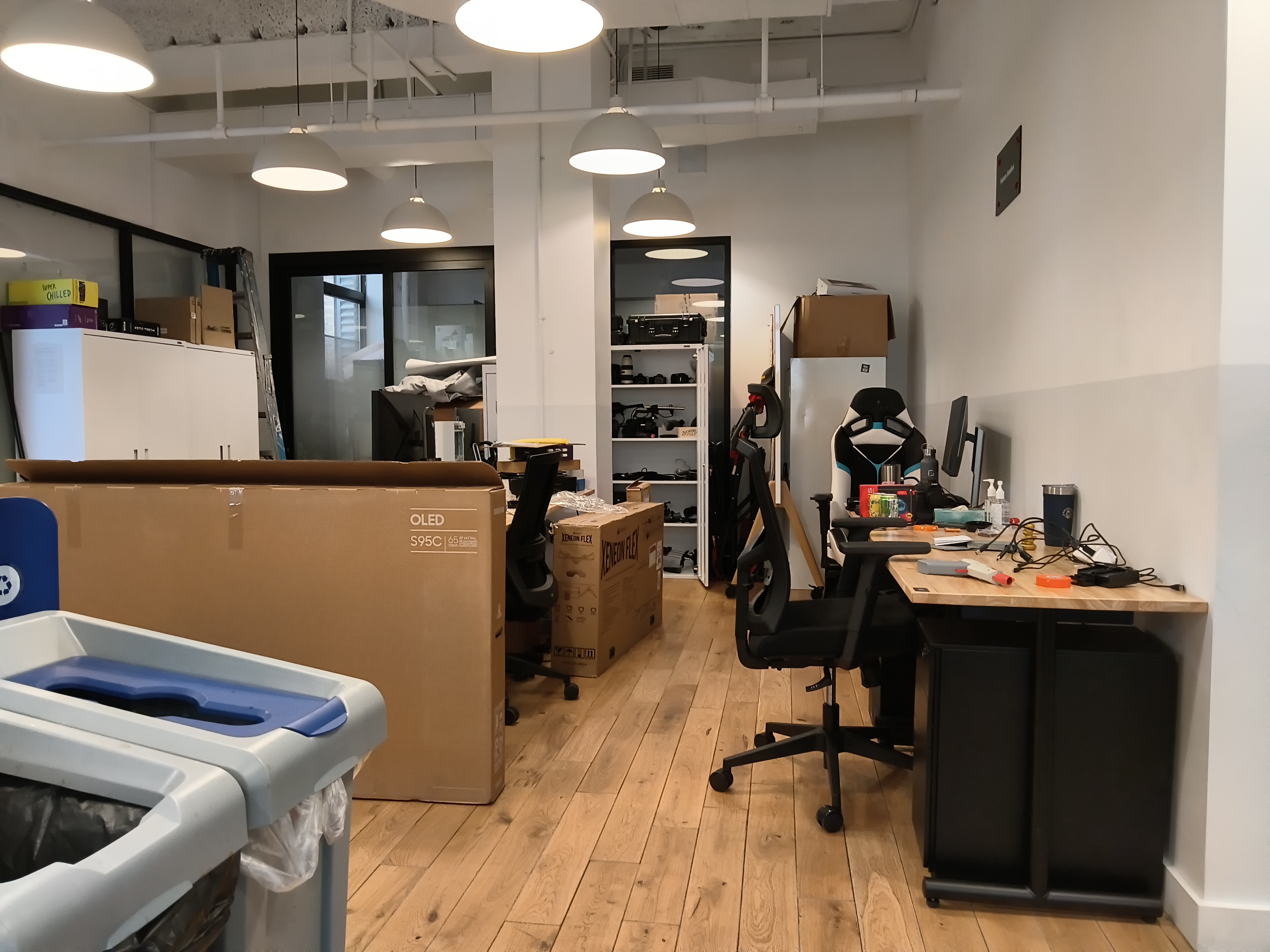
We took the photo above in our office. As you can see, all the items are clearly visible and distinct. The image quality is sharp, bright and has solid color accuracy. Thanks to the rear camera’s placement, it’s easier to shoot photos with than most tablets, which typically have rear cameras mounted in a corner.

The front-facing 8MP camera is just as excellent. It accurately captures skin tones and details on clothing. It’s a great camera for video conferencing.
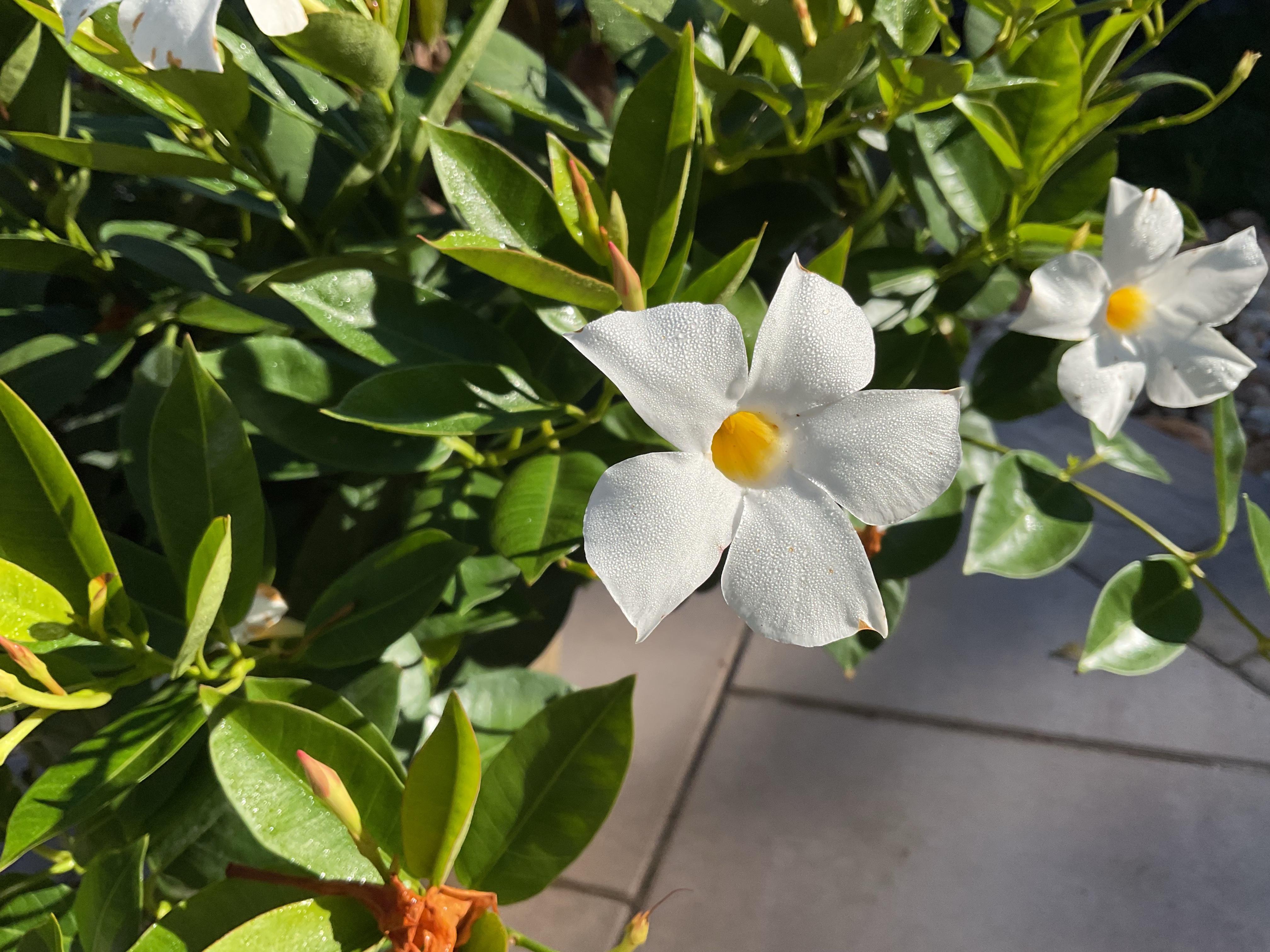

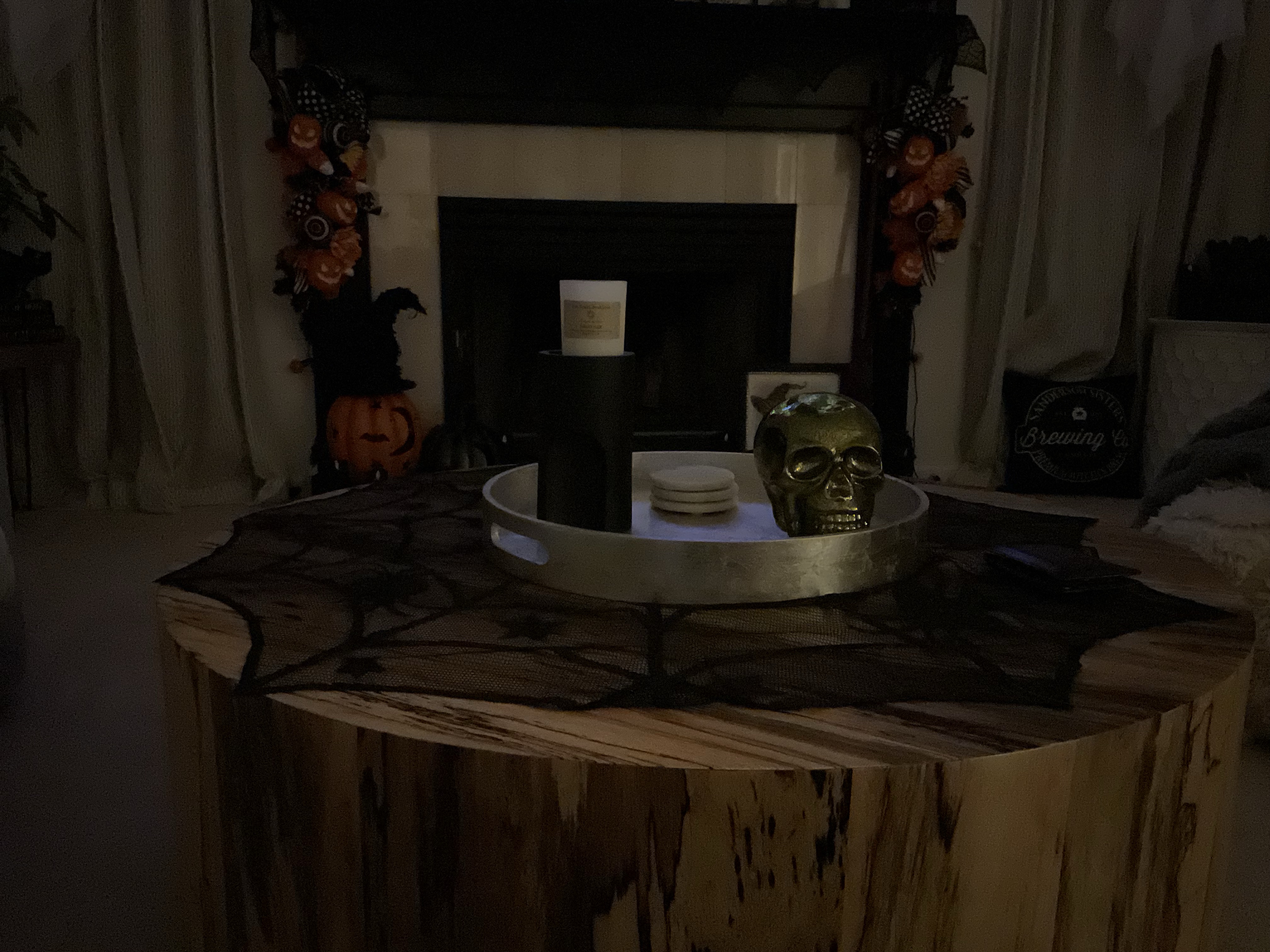
The iPad’s rear 12MP camera is a mixed bag. For instance, the photo we snapped of a flower is bright and detailed. The iPad also blurs out the surrounding leaves. The tablet also does well indoors when there’s a decent amount of ambient lighting. However, we noticed some graininess in the photo of a witch’s boot on a fireplace mantle.

Up front, the iPad features a 12MP camera with a new landscape location above the long edge of the display. This makes the iPad better for video calling compared to its predecessor. Even in a dimly lit room, the iPad delivers a fairly sharp image, as you can see in this photo Tom’s Guide Global Editor in Chief, Mark Spoonauer, took. The iPad lights up the display, sort of like a pseudo flash.
Neither tablet disappoints when it comes to their respective front and rear cameras. As such, I feel it's a draw when determining which tablet has the better camera setup.
OnePlus Pad vs iPad (10th gen): Battery life and charging
On the Tom’s Guide battery test, which involves continuous web surfing at 150 nits of screen brightness, the OnePlus Pad lasted an excellent 13 hours and 31 minutes over Wi-Fi. That’s much longer than the iPad 10th gen (10:57).
| Header Cell - Column 0 | Time (hours:mins) |
|---|---|
| OnePlus Pad (10th gen) | 13:31 |
| iPad 10th gen | 10:57 |
Charging times are impressive. In our testing, it took 15 minutes to charge the OnePlus Pad to 25% and 30 minutes to reach 41% battery capacity. These results are much better than the iPad 2022, which took 30 minutes to charge to 26%.
Overall, the OnePlus Pad has longer battery life and charges faster than the iPad 10th gen, which is key in situations like long flights and car rides.
OnePlus Pad vs iPad (10th gen): Stylus support
This is one area where the OnePlus Pad has a clear advantage over the iPad.
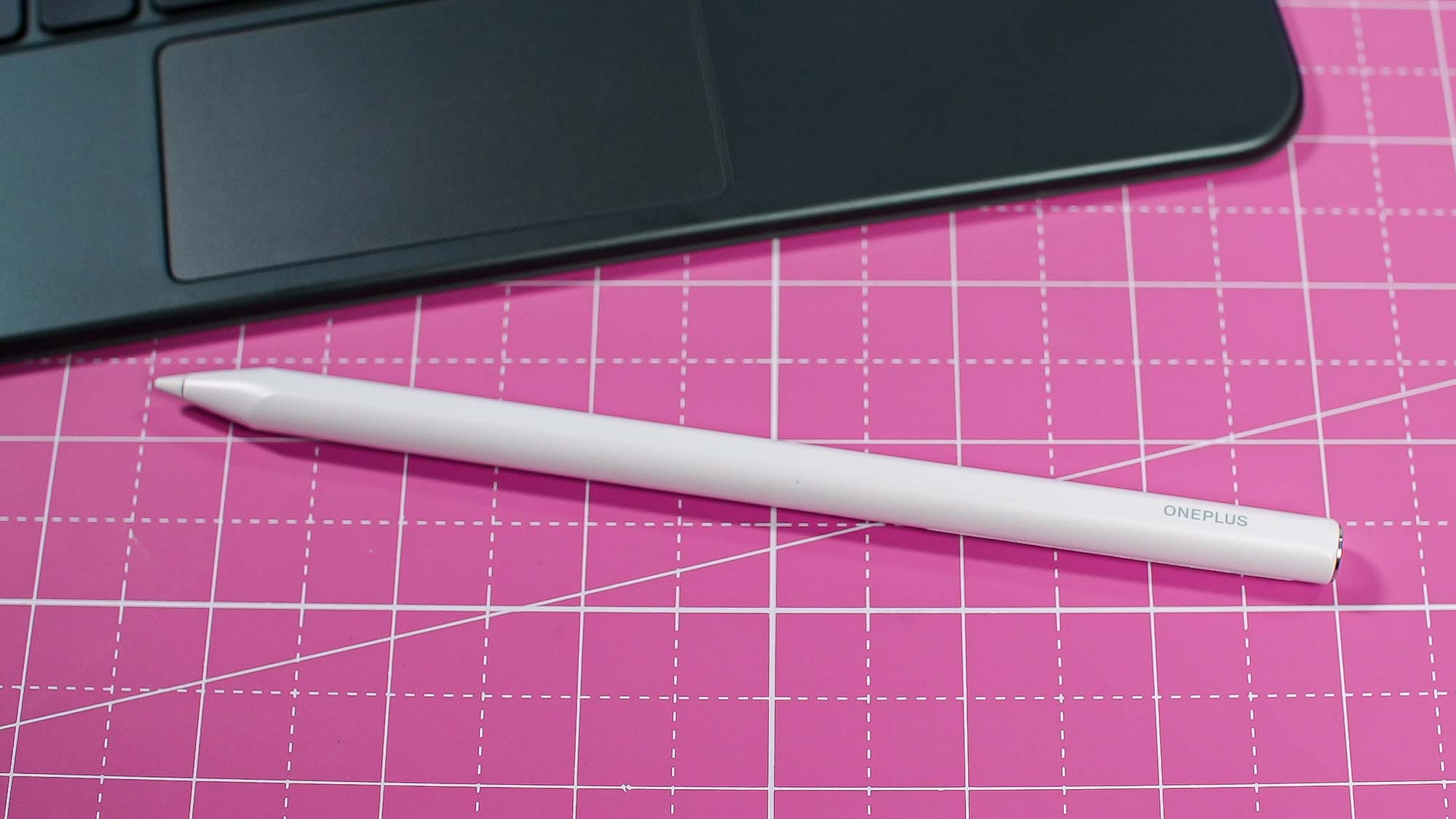
The OnePlus Stylo is one of the best Apple Pencil alternatives. The stylus is sturdy and has a good amount of weight. It also has a thick tip, unlike the Samsung S Pen. And in contrast to the iPad 10th gen, you can recharge the pen by snapping it to the flat top portion. No separate USB-C adapter required! The Stylo is a great pencil that's fine to use.
Apple Pencil support is one of the biggest issues with the iPad. The tablet doesn’t support the latest 2nd gen Apple Pencil, so if you want to draw, take notes and more, you’ll have to pay for the $99 1st gen Apple Pencil. There's nowhere to store the pencil when not in use since it doesn't magnetically attach to the iPad.
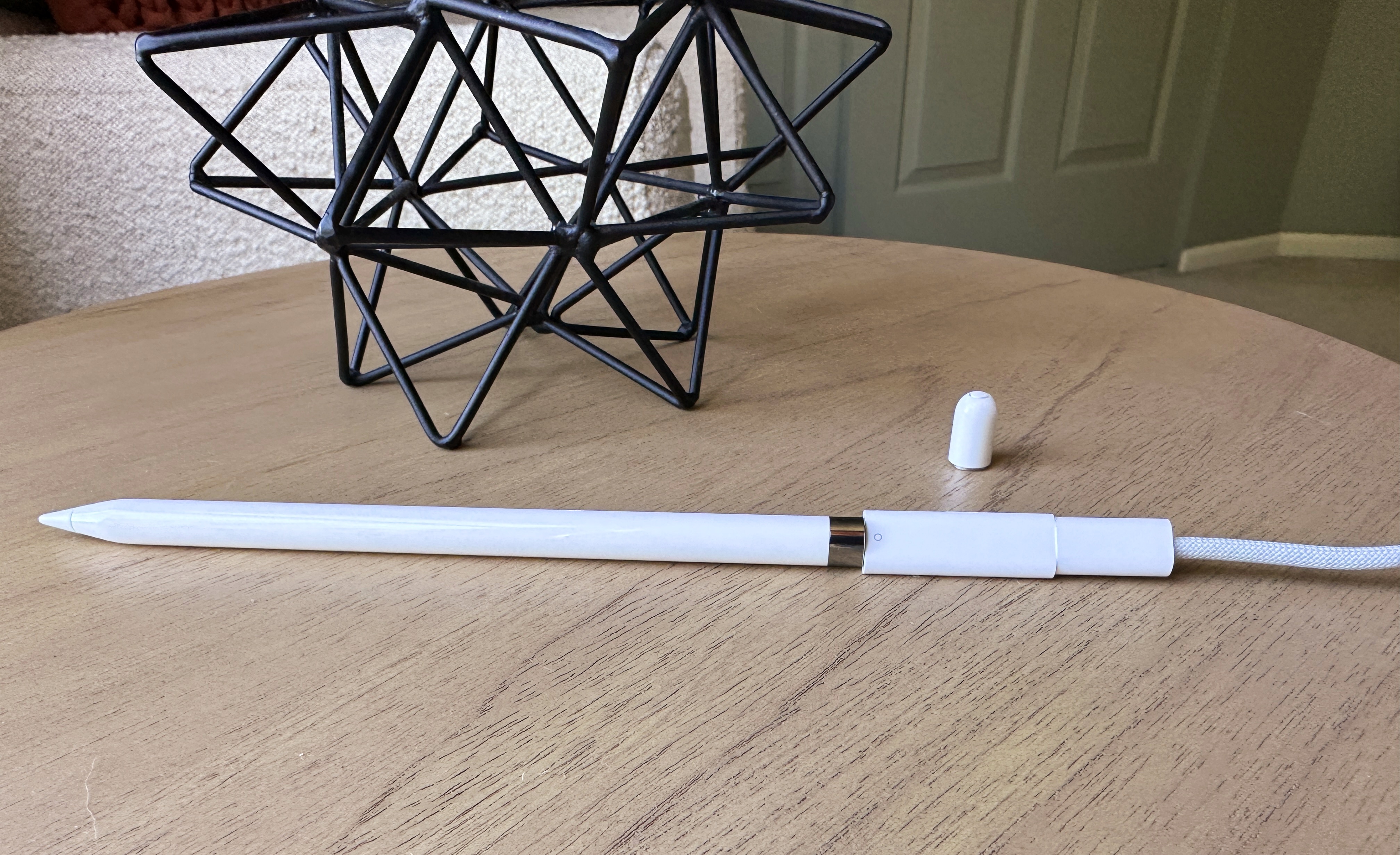
Worse still is that you need to pair and charge the Pencil with a separate USB-C to Apple Pencil adapter since it still uses an old Lightning connector instead of USB-C. This is a huge miss for a company that prides itself on smart design. Yes, the adapter is included, but it's an awkward solution regardless.
OnePlus Pad vs iPad (10th gen): Bottom line
The OnePlus Pad and iPad 10th gen are two of the best tablets out there under $500. Both feature crisp displays, sharp cameras and sleek designs. You can't go wrong with either, but depending on your needs, one could be better for you than the other.
If you're looking for a fast Android tablet that also makes a visual statement, the OnePlus Pad is the slate to get. Its performance isn't on par with the iPad, but it has superior battery life and a 144Hz refresh rate. The tablet is $30 more than Apple's slate, but $200 less than the Galaxy Tab S8.
Conversely, if you like Apple and are entrenched within the Apple ecosystem, then the iPad is the stronger option. The iPad also has overall stronger performance if you want a tablet with more power. If performance is important, the M1-powered iPad Air 5 tops the iPad 10th gen, though it costs $150 more.
More from Tom's Guide

Tony is a computing writer at Tom’s Guide covering laptops, tablets, Windows, and iOS. During his off-hours, Tony enjoys reading comic books, playing video games, reading speculative fiction novels, and spending too much time on X/Twitter. His non-nerdy pursuits involve attending Hard Rock/Heavy Metal concerts and going to NYC bars with friends and colleagues. His work has appeared in publications such as Laptop Mag, PC Mag, and various independent gaming sites.
